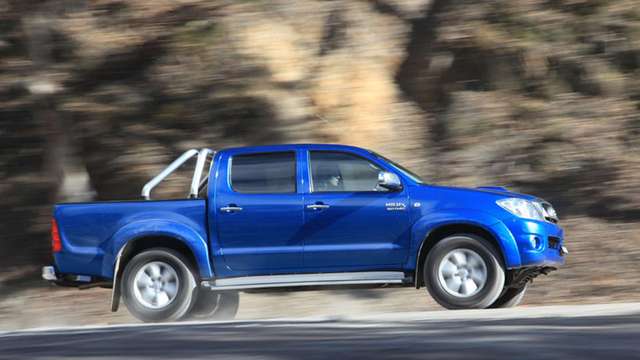- top tips
Why we love the Toyota Hilux

Updated 8 Oct 2019
Bruce McMahon

AUSTRALIANS have always loved a ute, right back to the 1930s and Ford Australia’s first coupe utility.
But the one we love the most these days is Toyota’s HiLux, our top-selling vehicle of any type.
In 2017 the HiLux broke its previous record with 47,093 rolling out of showrooms across the country; its success helps keep Toyota on top of the sales charts.
While the HiLux, as with any machine, was never infallible, it’s proved a reliable stayer through competent engineering, attention to detail and clever marketing over more than five decades.
The first arrived here in 1968, imported by mining magnate Sir Leslie Thiess.
His far-flung concerns meant these HiLuxes were seen, and serviced, in far-flung and rugged places.
Toyota were keen too to learn about the business of exporting; the company listened and sorted out issues for the HiLux to build an enviable reputation as a made-tough-for-Australian-conditions workhorse, relied on from outback mine sites to isolated beaches.
The HiLux was in on the ground floor when four-wheel driving became a pastime from the 1980s on.
It was built right and backed by a widespread dealer and service network.
As it went through the generations, as more variants were offered and the reputation was enhanced, the Toyota HiLux also attracted more premium pricing.
This only added to the lustre resale prices were better than most rivals.
The Toyota HiLux is now in its eighth generation with some 30 variants offered.
There are base two-wheel drive delivery utes from around $20,990, there are dressed-up, mean-looking four-wheel drive dual cabs up to $61,990.
All are very good at their respective jobs, attracting custom from tradesmen to fisherfolk, farmers to families.
And sales success also drives sales success. The more sold, the more the marketing department can push the best-sellers angle; how could so many people be wrong?
So the HiLux has a number of factors contributing to its ongoing success: reliable workhorse reputation; Australia’s ongoing love of four-wheel driving; a huge number of variants; widespread sales and service network; resale values; and market mass.
For donkeys’ years none of the challengers - in the main Japanese brands - have come close to the Toyota HiLux overall sales results.
Still, there has been movement at the station since Ford’s latest Ranger arrived in 2011.
Designed in Australia by Ford and Mazda engineers, the Ranger has been more than well accepted.
Take out the fleet and government business and the Ranger could be number one in private sales.
As it is, for the 12 months of 2017 the four-wheel drive Rangers pipped four-wheel drive HiLuxes _ 36,932 compared with 35,297 _ with Mitsubishi’s Triton third most popular in that className with 20,513 sold.
But the HiLux countered with 11,796 two-wheel drive utes delivered compared with 5796 for the Ranger.
Yet while the competition has closed up in the four-wheel drive ute segment with rivals coming from all corners of the globe, it will be decades before the demise of Toyota’s venerable HiLux.
Do you own a Toyota Hilux and looking to get it serviced?
No worries! AutoGuru can help you find an awesome, high-quality local mechanic to help you with all your servicing needs.

Written By
Bruce McMahon
Bruce McMahon is a Queensland-based journalist who’s spent a fair slice of his career dealing with automotive matters.
His first car was a 1949 Riley Roadster, followed by a mix of machinery from Porsches to Jeeps, Alfa Romeos and Range Rovers through to the current four-wheel drive Mazda ute.
He’s driven the Nurburgring and the Tanami Tracks.